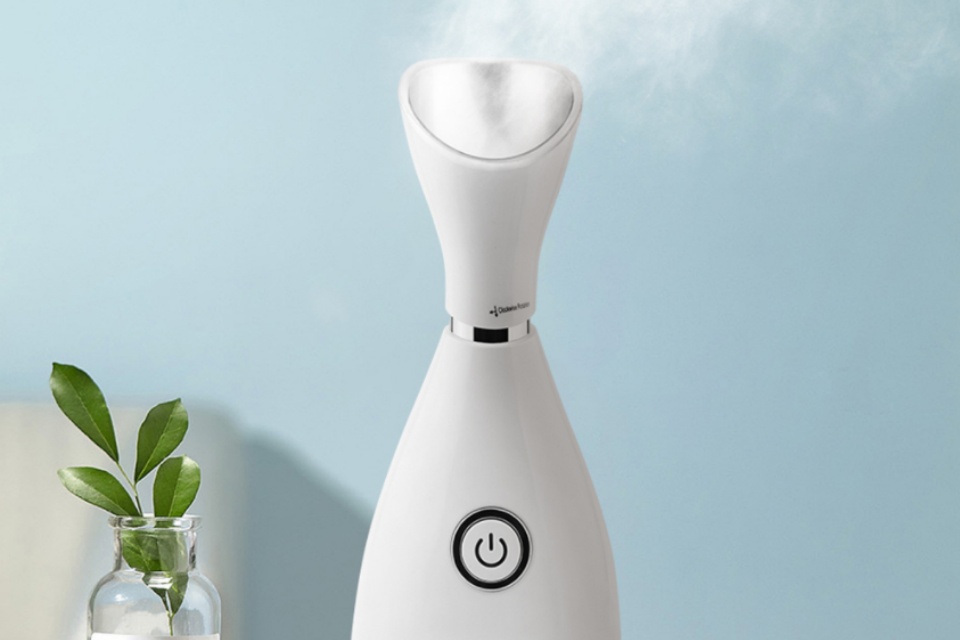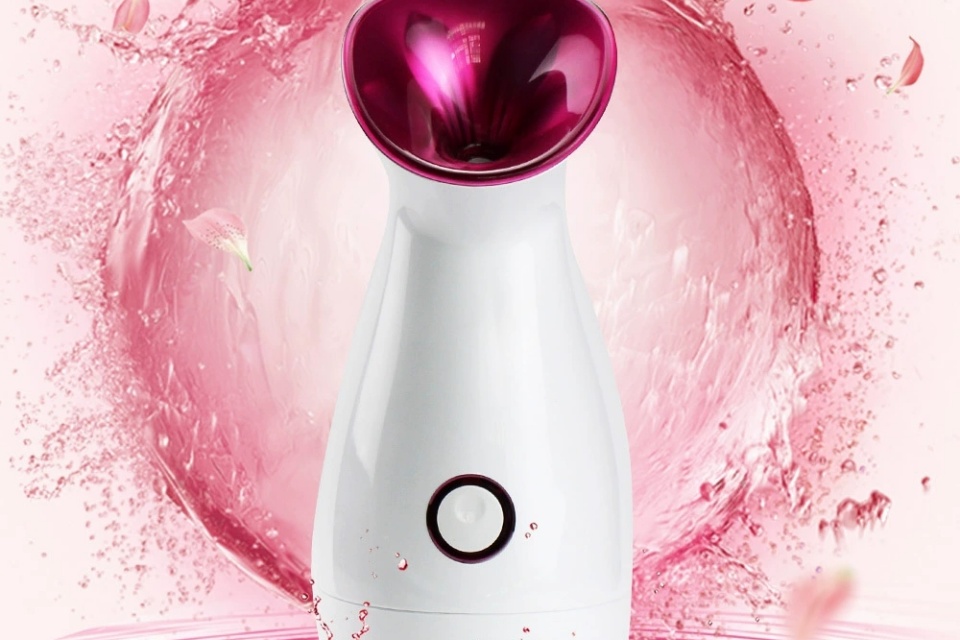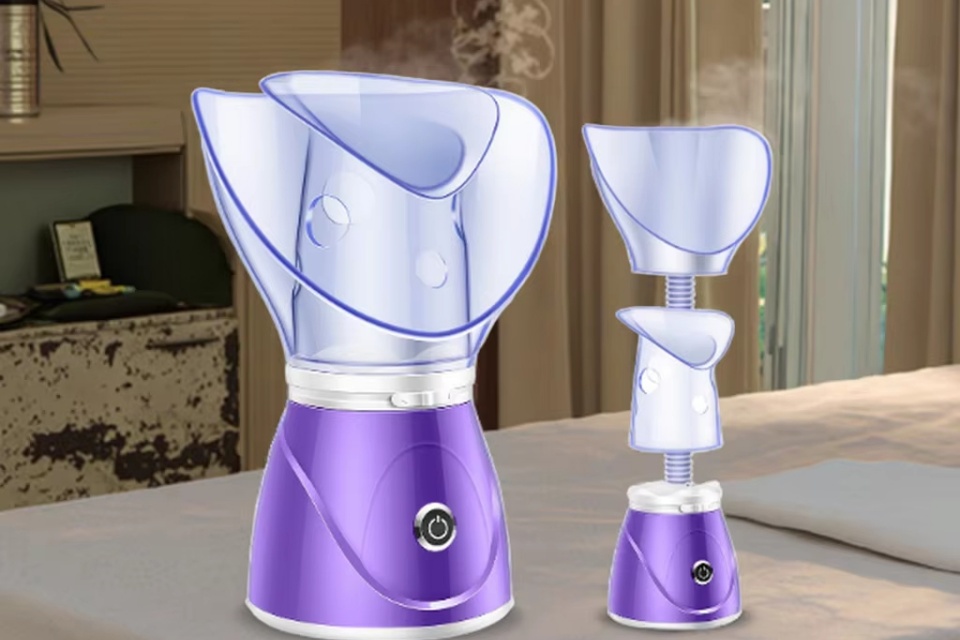Nano Mist Sprayer Or DIY Masks Hydration Efficacy
Summary
The nano mist sprayer is an innovative device that employs ultrasonic technology to transform liquids into ultra-fine droplets, enhancing the efficacy of skincare and hydration methods. By producing particles that measure less than 100 nanometers, these sprayers facilitate deeper penetration of moisturizers and active ingredients into the skin, making them popular in both professional beauty settings and at-home skincare routines. Their rise in popularity can be attributed to their effectiveness in addressing common skin issues such as dryness, particularly during harsh weather conditions, and their ability to refresh and hydrate skin throughout the day.
In addition to commercial uses, the trend towards DIY skincare has spurred interest in homemade hydration masks that incorporate nano mist technology. These DIY approaches, popularized during the COVID-19 pandemic, allow individuals to craft personalized skincare solutions using accessible household ingredients. However, debates around the efficacy and safety of DIY masks versus professionally formulated products have emerged, highlighting the need for consumers to understand the implications of their ingredient choices and application methods to ensure optimal results and minimize adverse reactions.
Notably, while studies indicate that nano mist sprayers can enhance immediate hydration and improve skin barrier function, questions remain regarding their long-term effectiveness in sustaining moisture levels compared to traditional moisturizing methods. Moreover, the interplay of environmental factors, such as humidity and temperature, further influences the performance of both nano mist sprayers and DIY masks, underscoring the complexity of skincare efficacy in varying contexts.
As technology advances, the potential for integrating smart features into nano mist sprayers and developing eco-friendly formulations is on the horizon, promising to revolutionize the skincare landscape while addressing consumer demands for sustainability and personalization. Thus, nano mist sprayers represent a significant intersection of ancient skincare practices and modern technology, embodying a shift towards more effective, individualized approaches to skincare.
History
The concept of using mist and vapor for therapeutic purposes has deep historical roots. Ancient civilizations utilized steam baths for general well-being, with records indicating that the ancient Romans were using them as early as 6000 BC. Therapeutic inhalation methods can be traced back even further, as documented in ancient Egypt around 1554 BC, where patients inhaled vapors from heated black henbane to alleviate respiratory issues. By 300 BC, Hippocrates employed a device to treat various ailments through inhalation, demonstrating an early understanding of vapor therapy in medicine.
The development of modern misting technologies began in the late 19th century with the invention of the atomizer by Dr. Allen Devilbliss in 1890. Frustrated by the unsanitary application methods of medications, he created a device that allowed for the direct spraying of medicine into patients' throats. This innovation soon found its way into the world of cosmetics, with adaptations leading to the creation of perfume atomizers and, subsequently, airbrush technology. The introduction of the plastic spray bottle in the 1940s by cosmetic chemist Dr. Jules Montenier marked another significant milestone, making it easier to deliver products like deodorants without the mess associated with previous cream formats.
In contemporary skincare, fine nano mist atomization technology has emerged, which utilizes ultra-high-speed vibration to convert water into nanoparticles. This advancement allows for better absorption of active ingredients into the skin, promoting hydration and skin health. Such technologies are now employed in various settings, from professional beauty services to at-home skincare routines, illustrating a blend of ancient practices with modern innovations in skincare and wellness.
Furthermore, the rise of DIY skincare, particularly during the COVID-19 pandemic, has led to increased popularity of homemade face masks, encouraging individuals to create their own treatments from everyday kitchen ingredients. Despite their benefits, there is a cautionary note regarding the efficacy and safety of these DIY approaches compared to professionally formulated products, underscoring the importance of knowledge in skincare practices.
Technology
Nano Ultrasonic Technology
Nano mist sprayers utilize advanced ultrasonic technology to convert liquids, such as water and skincare serums, into microscopic droplets measuring less than 100 nanometers in size. This process significantly enhances the absorption of active ingredients into the skin, allowing for deeper penetration compared to traditional misting methods. By utilizing ultrasonic atomization, these devices ensure that the hydration provided is both effective and efficient, reaching areas that standard sprays may not.
Mechanism of Action
The functionality of nano sprayers is rooted in fluid dynamics, which studies how forces affect fluid motion. The devices employ mechanisms that create a fine mist, either through a pump system found in conventional spray bottles or through airbrush systems that utilize pressure differentials to atomize liquid. For instance, when the actuator on a traditional spray bottle is pressed, a piston forces the liquid through a small nozzle, creating an aerosol mist. In contrast, airbrush applicators leverage the Venturi Effect to draw liquid into an airstream, further atomizing it for even distribution.
Advantages of Nano Sprayers
The use of nano sprayers has several benefits, especially for skincare routines. Their ability to produce ultra-fine mists promotes better hydration and can calm skin irritations. Furthermore, the nano-emulsion technology allows for the effective delivery of key ingredients such as vitamins and antioxidants, which can enhance overall skin health. The targeted application of these ultra-fine droplets not only improves the sensory experience but also maximizes the efficacy of skincare products, making them a game-changer in modern beauty routines.
Applications in Skincare
Nano mist sprayers are particularly advantageous for individuals looking to maintain skin hydration throughout the day. By delivering moisture in a form that penetrates the skin more effectively, these devices can alleviate issues associated with dry skin, particularly during harsh weather conditions. The convenience of using a portable device that integrates seamlessly into a skincare regimen makes it an attractive option for consumers aged 20 to 60 who prioritize skin health and beauty.
Efficacy
The efficacy of DIY hydration methods, particularly through the use of nano mist sprayers and masks, has garnered attention in both scientific research and popular beauty practices. Understanding their effectiveness requires a thorough examination of the underlying principles and conditions that influence hydration levels in the skin.
Hydration Efficacy of Nano Mist Sprayers
Nano mist sprayers are designed to deliver fine particles of water or hydrating solutions directly onto the skin, purportedly enhancing moisture absorption. Studies indicate that such devices can provide immediate hydration and improve skin barrier function, particularly in dry climates or environments with low humidity. However, the long-term efficacy of nano mist sprayers in sustaining hydration levels remains unclear, necessitating further investigation into their benefits compared to traditional moisturizing methods.
DIY Masks and Their Effectiveness
DIY face masks, which can be created using common household ingredients, offer an accessible means of skincare. Their efficacy largely depends on the components used and individual skin types. Ingredients such as hyaluronic acid, glycerin, and natural extracts like aloe vera and chamomile are known for their hydrating properties. However, the effectiveness of these DIY masks can vary, with factors such as skin type and the absence of harmful additives playing critical roles in their success.
Additionally, common mistakes in the application of DIY masks can diminish their efficacy. For example, neglecting to cleanse the skin prior to application can prevent optimal absorption of hydrating ingredients, leading to subpar results. It is also important for users to select formulations that cater specifically to their skin concerns, as using products designed for different skin types can exacerbate issues rather than alleviate them.
Environmental Influences on Hydration
The effectiveness of hydration methods, including both nano mist sprayers and DIY masks, is also influenced by environmental conditions such as temperature and humidity. High humidity can enhance the skin's ability to retain moisture, while low humidity levels may impede this process and necessitate more frequent hydration efforts. Consequently, the context in which these hydration techniques are employed is critical to their overall effectiveness.
Applications
Skincare Enhancement
Nano mist sprayers are increasingly popular in the skincare community due to their ability to enhance the efficacy of topical products. These devices utilize nano mist technology to ensure deep absorption of active ingredients, allowing for better hydration and nourishment of the skin compared to traditional application methods. When incorporated into a skincare routine, these sprayers can deliver a fine mist that aids in the absorption of moisturizers and serums, creating a more effective application process.
Facial Treatments
The use of nano mist sprayers can elevate at-home facial treatments, making them more enjoyable and effective. Many people find the act of applying toners and serums with their hands to be cumbersome; thus, the use of a misting tool provides a convenient alternative that can make the ritual more pleasurable. Although the penetration depth of products remains similar to manual application, the sensory experience of using a misting device can enhance the overall skincare ritual, adding an element of relaxation to the routine.
Professional Applications
In professional settings, such as beauty salons and dermatology clinics, nano mist sprayers can be utilized to improve the outcomes of various treatments. For example, they can be used in conjunction with other skincare devices, such as airbrush applicators, to ensure an even application of products during facials or makeup sessions. These tools are particularly beneficial when used alongside specialized formulations designed for deep hydration and revitalization of the skin, promoting optimal results and client satisfaction.
Seasonal and Environmental Adaptations
Adjusting skincare routines according to seasonal changes can be effectively supported by the use of nano mist sprayers. For instance, during warmer months, the sprayer can provide a refreshing boost of hydration, while in colder climates, it can help to maintain moisture levels in the skin. Furthermore, the sprayer's ability to deliver active ingredients in a fine mist can be especially useful for travelers facing dehydrating conditions, such as air travel, where intensive hydration is needed within 24 hours of flying.
DIY Mask Integration
For those engaged in DIY skincare practices, incorporating nano mist sprayers can enhance the effectiveness of homemade masks and treatments. By misting the skin before applying a DIY mask, users can promote better adhesion and absorption of the mask's beneficial ingredients. This method not only enhances hydration but also allows for a more enjoyable application experience, transforming routine skincare into a spa-like treatment at home.
Safety and Regulations
Importance of Patch Testing
Patch testing is a crucial step in ensuring the safety of DIY masks, particularly for individuals with known sensitivities. It is recommended to perform a patch test 24-48 hours before the first use of any new mask recipe. This involves applying a small amount of the mask mixture to a discreet area, such as the inside of the wrist or behind the ear, and monitoring for any adverse reactions, including redness, itching, or swelling. If any significant irritation occurs, it is advised to discontinue use and analyze the specific ingredients that may have triggered the reaction.
Proper Sanitation Practices
Maintaining proper sanitation is essential in the preparation of DIY masks to prevent contamination and ensure skin safety. Contaminated ingredients or tools can introduce harmful bacteria, leading to potential breakouts or infections. Users should thoroughly wash their hands with antibacterial soap and sanitize all mixing tools before use. Glass and stainless steel utensils are preferable as they are easier to sanitize and less likely to retain bacteria or oils from previous applications.
Ingredient Considerations
While many natural ingredients are often perceived as safe, they can still cause irritation or allergic reactions. Ingredients such as lemon juice or baking soda, despite their gentle reputation, may be harsh on certain skin types, especially with frequent use. Additionally, caution should be exercised with commonly used exfoliating masks, as leaving them on for extended periods can lead to irritant contact dermatitis. It is recommended to limit the use of DIY masks to once or twice a week, depending on individual skin conditions, to avoid overloading the skin.
Environmental Factors
Understanding environmental factors such as temperature and humidity can significantly influence the efficacy and safety of DIY masks. For instance, these factors may affect the rate of ingredient absorption and the potential for irritation. Users are encouraged to monitor their skin's response to these conditions and adjust their mask routines accordingly to optimize results and minimize adverse effects.
Monitoring and Documentation
Keeping a skincare journal can help users document their responses to different ingredients and combinations, aiding in identifying patterns and optimizing future formulations. Noting any environmental factors that may affect skin sensitivity is also beneficial in tailoring mask usage to individual needs. In cases of irritation or allergic reactions, it is crucial to remove the mask immediately, rinse thoroughly with cool water, and apply a gentle, fragrance-free moisturizer.
Future Trends
Advances in Nano Technology
The field of nano mist sprayers is witnessing rapid advancements, particularly in the area of ultra-high speed vibration technology, which enhances the effectiveness of skincare applications. This technology allows for the production of fine mist particles that can penetrate deeply into the skin, offering hydration without disrupting existing cosmetics. As research continues, improvements in the efficiency and effectiveness of nano particle delivery systems are expected to provide even more targeted skincare solutions.
Integration with Smart Technology
The integration of smart technology with nano mist sprayers is another emerging trend. Devices may soon feature enhanced connectivity options, allowing users to monitor their skincare routine through mobile applications. These applications could track usage patterns and skin hydration levels, providing personalized recommendations based on individual skin types and needs. Such innovations promise to transform the skincare routine into a more interactive and customized experience.
Sustainability in Ingredients and Packaging
Sustainability is becoming a focal point in the beauty and skincare industry. Future developments in nano mist technology may prioritize eco-friendly ingredients and packaging solutions. The use of natural, non-toxic ingredients in formulations, combined with recyclable or biodegradable packaging, could align with the growing consumer demand for sustainable products. This shift may not only improve product efficacy but also reduce the environmental footprint of beauty routines.
Expansion into Functional Foods
Beyond skincare, the application of nano mist technology is expanding into the realm of functional foods. The ability to encapsulate and deliver nutrients effectively through nano-sized particles could revolutionize the food industry, leading to innovative products that enhance nutrition and flavor. This could open new markets for nano mist applications, as consumers increasingly seek convenient ways to incorporate functional ingredients into their diets.
Enhanced User Experience
The design and usability of nano mist sprayers are expected to evolve, focusing on user experience. Features such as longer battery life, cordless operation, and ergonomic designs will likely become standard, making these devices more accessible and enjoyable to use. The inclusion of customizable mist settings could further enhance the user experience, allowing for a tailored application suited to various skincare needs and preferences.
Research and Development
As the demand for more effective and scientifically-backed skincare solutions grows, further research and development in the field of nano technology will likely lead to breakthroughs in product formulations and delivery mechanisms. The emphasis on biological availability and targeted delivery systems promises to elevate the standards for skincare products, ensuring that consumers receive optimal results with every application.
 English
English Español
Español Português
Português Pусский
Pусский Français
Français Deutsch
Deutsch 日本語
日本語 한국어
한국어 Italiano
Italiano عربى
عربى

